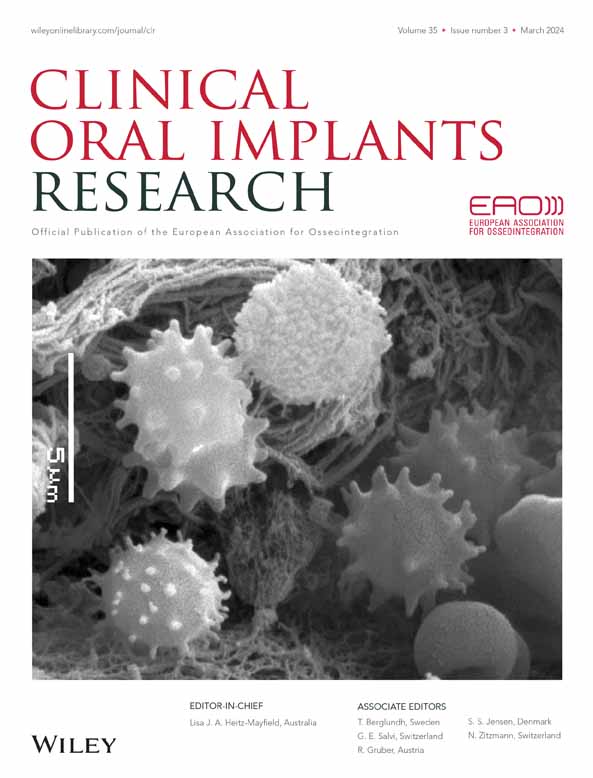The influence of guide stabilizers and their application sequences on trueness and precision of surgical guides in free end situations: An in vitro analysis
Runheng Liu, Ruidi Xia and Linjun Zhang should be considered joint first authors.
Abstract
Objectives
To evaluate the impact of guide stabilizers and their application sequences on implant placement accuracy of guided implant surgery in multiple teeth loss at free end.
Materials and Methods
In this study, 96 implants were placed in the regions of #34, #36, and #37 of 32 identical mandibular models. The influence of using guide stabilizers or not (group A and group B) and various guide stabilizers application sequences (group B: #34 → #36 → #37; group C: #36 → #34 → #37; group D: #37 → #34 → #36) on implant placement trueness and precision was investigated. Data were analyzed using T-tests and one-way ANOVA.
Results
Group B showed significant benefits in enhancing implant placement precision. Compared to group A, it resulted in reducing 3D-deviation at crest and 2D deviation in vestibular-oral direction at both crest and apex. Furthermore, group D demonstrated greater improvement in global implant placement precision by reducing 2D deviation in mesial-distal direction at both crest and apex. Among the three different stabilizer application sequences, group D exhibited the highest level of implant placement precision.
Conclusions
In cases of missing teeth at distal free end, the use of guide stabilizers and their application sequences does not have a significant impact on implant placement trueness. However, they do improve implant placement precision compared to methods that do not utilize guide stabilizers. Specifically, applying a guide stabilizer first at the furthest implant site to change teeth loss classification from free end to edentulous space with posterior support is the most reliable sequence.
CONFLICT OF INTEREST STATEMENT
The authors declared no potential conflicts of interest with respect to the research, authorship, and/or publication of this article.
Open Research
DATA AVAILABILITY STATEMENT
The data that support the findings of this study are available from the corresponding author upon reasonable request.




